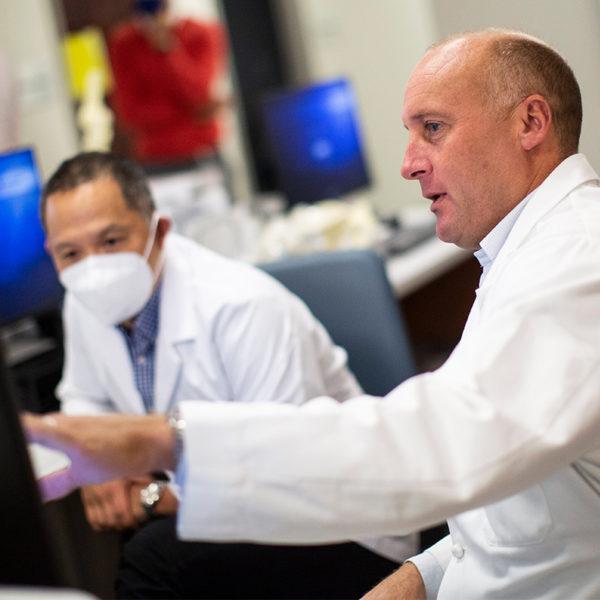Hip Fractures

Overview
What are Hip Fractures?
A hip fracture is a partial or complete break in the thigh bone in the femur’s upper portion. It is a serious injury that can be life-threatening.
About 300,000 people in the United States suffer from hip fractures each year. Nearly three-quarters of all hip fractures happen in Asian and Caucasian women over the age of 50 because changes in hormones can lead to osteoporosis and fragile bones. Vision and balance also tend to get worse with age, making it easier to trip and fall. Simple or sideways falls are responsible for about 95% of fractures.
There are other factors that increase the risk of sustaining a hip fracture as well. These include: medical conditions like Endocrine disorders, intestinal disorders, diabetes, high blood pressure or hypertension. Medical conditions that affect the brain and nervous systems like dementia, stroke, cognitive impairment, Parkinson’s disease, and peripheral neuropathy can contribute to falls and fractures, as can the use of sleep aids, sedatives, and antipsychotics. Lack of weight-bearing exercise, being underweight, the use of cortisone medications, tobacco, alcohol, and drugs can also contribute to falls resulting in hip fractures.
In younger people, hip fractures tend to occur following a car accident, long fall, or other traumas. Or they may develop a hairline crack, also known as a stress fracture, from overuse and repetitive motion.
Symptoms
Hip Fracture Symptoms
There are several indications that a hip fracture may have occurred. These include:
- Pain in the hip, groin, knee, or lower back
- Inability to walk, put weight on the leg, or get up after a fall
- One leg may appear shorter than the other, or the foot or leg may turn outward
- Bruising or swelling around the hip
- A feeling of muscle strain or tendonitis
Diagnosis
Hip Fracture Diagnosis
A hip fracture diagnosis begins with an examination. The doctor may be able to identify a hip fracture based on symptoms combined with the abnormal position of the hip and leg. Usually, an X-ray will confirm if there is a fracture and show where and how severe the fracture is. If the X-ray doesn’t show a fracture but there is still hip pain, the doctor might order an MRI or bone scan to look for a hairline fracture.
Treatments
Treatments for Hip Fractures
A hip fracture almost always requires surgical repair or hip replacement, rehabilitation, possibly pain medication and antibiotics, and physical therapy.
Surgery
The type of surgery will depend on where and how severe the fracture is. Other factors include if the broken bones are correctly aligned or not, the patient’s age, and any underlying health conditions. The surgical options include:
Internal repair using screws
Metal screws are inserted into the bone to hold it together while the fracture heals. Sometimes screws are attached to a metal plate that runs down the femur.
Partial hip replacement
If the ends of the broken bone are displaced or damaged, the surgeon might remove the head and neck of the femur and install a metal replacement.
Total hip replacement
The surgeon replaces the patient’s upper femur and the socket in the pelvic bone with artificial parts (prostheses).
Rehabilitation
The physical therapist will get the patient out of bed and walking the day after surgery, focusing on the patient’s range-of-motion and strengthening exercises. Depending on the type of surgery and whether the patient has help at home, the doctor may order that the patient goes to an extended care facility.
An occupational therapist will work with patients once the hospital releases them. The therapist will teach techniques for independence in daily life, such as bathing, dressing, using the toilet, and cooking. The patient may need a walker or wheelchair to help them regain mobility and independence.
Specialists
Hip Fracture Specialists
Benjamin Bengs, M.D. provides consultation, diagnosis, and hip fracture treatment.
No People Found
Publications:
- Research Profiles Supported by Funding | OREF
- Active Referral Intervention following Fragility Fractures Leads to Enhanced Osteoporosis Follow-Up Care – PubMed (nih.gov)
- Less range of motion with resurfacing arthroplasty than with total hip arthroplasty: in vitro examination of 8 designs – PubMed (nih.gov)
- Hip resurfacing as a treatment for synovial chondromatosis – PubMed (nih.gov)
- Fixation of non-cemented total hip arthroplasty femoral components in a simulated proximal bone defect model – PubMed (nih.gov)
Testimonials



